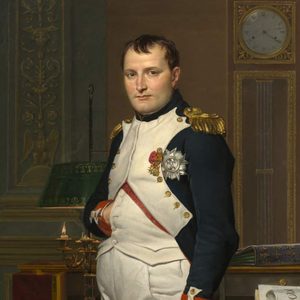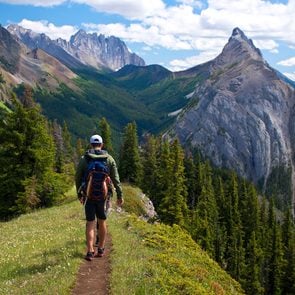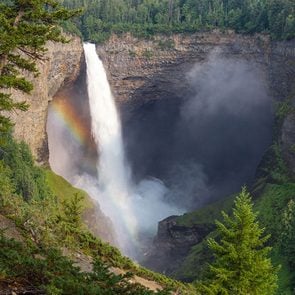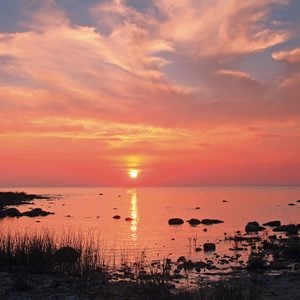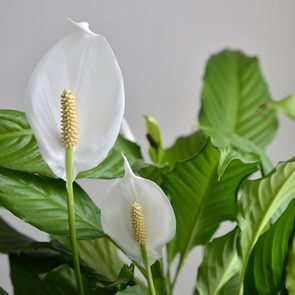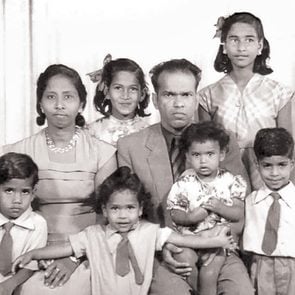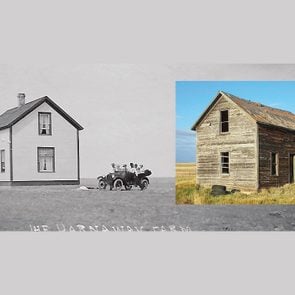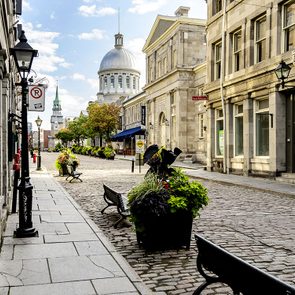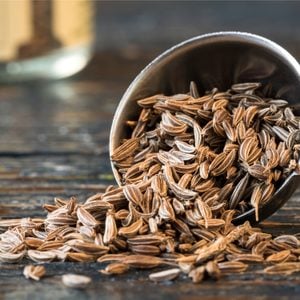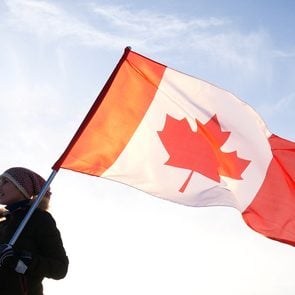Kit Kat, with its crispy wafer layers, smooth chocolate coating and unmistakable crunch, is a classic candy bar—top tier in most Halloween candy collections. You don’t need a holiday to snack on a Kit Kat, though; according to Nestle, more than 1 billion Kit Kats are consumed each year in the UK alone. That’s a lot of chocolate bars!
This confection is enjoyed around the world, no doubt about it. The brand is always coming up with fresh takes on the original Kit Kat, too, like Pumpkin Pie and Mocha flavours. Because we enjoy this candy bar so much, we can’t help but wonder—what does Kit Kat stand for?
What people think “Kit Kat” stands for
Truth be told, there are many theories behind the Kit Kat bar’s name.
Some claim the treat is named after a club in England, called the Kit-Cat, where Sir Godfrey Kneller’s paintings of club members hung in the late 1600s and early 1700s. This club had low ceilings, so it could only accommodate paintings of a specific size, historically referred to as “kit-cat size.”
The term “kit-cat” or “kit-kat” was used elsewhere in the 17th and 18th century. It was also the name of a magazine published out of Pennsylvania, by Keighton Bros. publishing. The print was “a weekly magazine for the home” and sold subscriptions for 50 cents.
Even more theories exist, though most are less popular. But the question remains—how do we know what’s true?
What does it really mean?
According to Nestle, the company that produces the beloved Kit Kat bar, a confectioner named Joseph Rowntree officially coined the name and started selling the treat in 1935.
Nestle shares that the “name first appeared on a boxed assortment of chocolates that Rowntree’s made during the 1920s.” That name came from an 18th century Whig literary club titled after a man named Christopher Catling—or Kit Cat. We’ll have to take Nestle’s word on this one!
Next, check out the real reason why maple syrup bottles have those tiny handles.

Our family likes to hit pause, escape the everyday, connect with nature and explore our beautiful province of Manitoba. In the summer of 2020, it was even more important, due to the stress of the pandemic. Jared and I started taking our girls, Autumn and Nia—now 15 and 12 years old—into the backcountry from a very young age. We started with short trips, slowly increasing the length and difficulty over the years.
Last summer, as August drew to a close, we hiked the Mantario Trail in Whiteshell Provincial Park in eastern Manitoba. This 63-kilometre wilderness hiking trail is a test of endurance as it weaves through the Canadian Shield.

For a few days, we were alone in the backcountry, away from the chaos of everyday life. We find that when we disconnect with the everyday and connect with nature, we depend on team work and develop bonds as a family. Over five days we hiked 27 hours, as our family followed the trail through forest, over granite ridges, through marshes, over creeks and along lakes. Nia enjoyed the sections of the trail that meandered through the marshes and bogs, as you tend to dance along the trail, leaping from solid ground to fallen logs, trying not to miss and end up in the marsh. This trail challenged our endurance, climbing 30 metres down from a granite ridge to the valley forest, crossing a creek or marsh and then climbing up 50 metres to the granite ridge on the other side. We were rewarded along the trail with amazing views over granite ridges and across rocky lakes. Autumn enjoyed the parts of the trail that scrambled up or down rocky boulders that Mother Nature left for us like a natural staircase.

There are three small lakes along the hiking trail called One Lake, Two Lake and Three Lake. This section is known to be one of the more challenging parts of the route as fresh water access is scarce. We had to carry an extra four litres of water that hot day, adding to the weight of our packs. But the selfie we took from the granite ridges around Two Lake was rewarding! We stopped each day for lunch at a lake and took a swim to cool off, as the weather turned warmer than expected. Each night we were thoroughly exhausted when we stopped for another swim and supper at the campsite. We fell into our sleeping bags in our tent at the end of each day, to listen to a few chapters of the paperback book we read as a family.

One morning, a couple who shared the campsite requested that next time I read louder so they could enjoy it, too! My favourite campsite was on Peggy Lake, where we set up our tent a metre or two off the trail, on a sliver of land. The loons and crickets sang us to sleep that night, and the trumpeter swans were our alarm clock early the next morning.

On the last day, as we neared the north end of the trail, the landscape changed as we climbed down from the rocky ridges into the ash and alder forest hugging the shores of Big Whiteshell Lake. Jared enjoyed following the maze-like trail around huge ash trees. This part of the trail felt magical, with the sun muted from the giant trees and the landscape covered in green moss—you could almost see the fairies peeking out from behind the trees. Taking time out as a family to slow down, connect with nature and recharge helps build strong bonds that will help us tackle challenges in everyday life. It takes sweat and tears, along with joy and laughter, to tackle a challenge and succeed. We are renewed as a family by our pause, to go back to the everyday and wade through the messy and busy parts of life. And to dream—where will our next adventure take us?
Next, check out 10 of Canada’s greatest hikes.
If it feels like you’re hearing more about wildfires this year, here’s why: According to the Government of Canada, the number of wildfires across the country this summer is well above average. In particular, British Columbia is seeing double the average number of wildfires prompting the provincial government to declare a state of emergency on July 21. Likewise, the U.S. has reported over 6,000 more wildfires this year compared to the same time period in 2020.
With the increasing number of wildfires comes an increase in the amount of wildfire smoke, stoking concerns about air quality.
Wildfire smoke consists of toxic air pollutants in the form of fine particles. These particles can seep into our lungs and bloodstream and can lead to serious health issues. Even people who aren’t close to a wildfire can be affected by wildfire smoke. For instance, fires in Northern Ontario sparked air quality warnings in Southern Ontario cities, including Toronto and Hamilton.
“You do not need to be able to see or smell smoke to have potential health effects from it,” says Dr. Sarah Henderson, associate professor at University of British Columbia’s School of Population and Public Health. “Those fine particles make a lot of impact to air quality before you can actually see them in the air.” Wildfire smoke spreads far, which means people thousands of kilometres away from a fire can be impacted, says Henderson.
This summer, Environment Canada has issued air quality advisories for cities from New Brunswick to British Columbia—and with the fires still burning, these issues are expected to continue. We caught up with Henderson to find out how we should protect ourselves.
Pollution is all around us—is wildfire smoke that much worse? How can it affect our health?
“This form of air pollution is different from the kind of pollution that comes from cars or industries,” says Henderson. “It has fine particulate matter, and the problem with that is when you breathe, the particles can be inhaled very deep into your lungs.” This can trigger your body to have an immunological response, she explains. “They’re a foreign invader—the way a bacterium or virus would be—and your body tries to get rid of them in the same way.” Since our immune system isn’t able to neutralize its response to wildfire smoke like it may be able to do with a virus, it can put the body into a state of inflammation.
Are certain people more vulnerable to the health effects of wildfire smoke?
Wildfire smoke is particularly concerning for people who have pre-existing respiratory conditions, especially asthma or chronic obstructive pulmonary disease (COPD). But anyone whose health is compromised by a chronic condition (including heart disease, lung disease and diabetes) will be at a higher risk of experiencing health effects. “We’re also concerned about people who are pregnant, infants, and small children whose lungs are still developing,” says Henderson. “ Also, older adults, since lung capacity decreases with age, and anybody who has an acute respiratory infection, like COVID or influenza.”
What are some of the most common health effects of wildfire smoke?
“For most people, the effects will be transient,” says Henderson. And if you don’t have a condition such as asthma or COPD, you may not feel any symptoms.
For some people, wildfire smoke can cause eye irritation, a runny nose (also known as rhinorrhea), sore throat, a mild cough, headaches and an increase in phlegm, according to the B.C. Centre of Disease Control.
People who have a respiratory condition may find their airways closing up, causing them to have difficulty breathing, says Henderson. Furthermore, “people who have heart disease might feel heart palpitations, and people who have diabetes may have difficulty getting their insulin balance.”
Should I check the air quality index before leaving the house?
Henderson encourages people to use the AQHI (The Air Quality Health Index) smartphone app, which tells users whether or not wildfire smoke is around them. “AQHI is an index that goes from one to 10, and for every value of the index, there’s advice,” says Henderson. “When air quality gets quite poor, we would recommend people limit their time outdoors and limit their exertion outdoors—the more you breathe, the more smoke you inhale.” This means you’ll want to avoid high-intensity outdoor workouts, in particular.
Are face masks effective against wildfire smoke?
“If people feel they need masks for respiratory protection, the best one they can wear is a particle respirator, which is an N95 or KN95,” says Henderson. “Those work really well for removing small particles out of the inhaled air, as long as the air goes through the material of the mask and not around—the mask has to be well-fitted to the face.” Henderson warns particle respirators can make it harder to breathe, and they can be uncomfortable, so you’ll want to avoid having to wear one for a long period of time.
How else can we protect ourselves?
Whether we’re working from home or lounging on the couch, most of us spend ample time indoors, so it’s important to keep our indoor environments as smoke-free as possible. “That means closing doors and windows if it’s safe to do so without getting too hot and, if you have the resources to do so, having a portable air cleaner,” says Henderson. “If there’s one thing you can do to protect your health, it’s getting a portable air cleaner and using it.”
Henderson prefers the term “air cleaner” over “air purifier.” (“What does ‘pure air’ even mean?” she asks.) Henderson offers tips for selecting the right product for your home: “Look for one that uses a heat pump filtration—not ozonation, which puts more ozone into the air and doesn’t do anything to remove the particles from the air,” says Henderson. She recommends getting an air cleaner with HIPAA filtration and being careful to select one that is the correct size for the room(s) you want to use it in.
How long does wildfire smoke last in the air?
“It really depends on the fires and the weather,” says Henderson. When fires continue to burn, smoke can last for weeks or months. “If a really smoky fire was suddenly extinguished, the smoke would likely be fully dispersed by light winds within 24 to 48 hours—faster if the wind was strong or if it was raining.”
Any tips for staying healthy during wildfire season?
“My biggest tip is to listen to your body,” says Henderson. Some people are more sensitive to smoke than others, she says, so it’s important to listen to the signals.
“If you have a headache, if your breathing feels funny, respect what your body’s telling you and take it easy,” says Henderson. “Take measures to protect yourself and drink lots of water to help reduce that inflammation.” (Here are seven times you need to drink more water than usual.)
While wildfire smoke is a serious potential health risk, Henderson also cautions that there’s no reason to panic. “If you take some simple measures to protect yourself, you should be OK for the most part.”
Are there any long-term side effects of smoke inhalation?
Henderson says researchers are still trying to answer that question. “The thing I always tell people is if you protect yourself from inhaling smoke in the short term, you’re going to protect yourself from any potential long-term health effects that we might discover five or 10 years from now,” she says. “The key message is: Try to reduce your exposure.”
Next, read up on the worst forest fire in Canadian history.
Princess Diana should have led a storybook life. At age 20, she married Prince Charles and went on to have two handsome sons, Prince William and Prince Harry, whom she loved dearly. But then her marriage unravelled, and Princess Diana’s suffering eventually became public knowledge. It was only after she finally broke free of her unhappy marriage that she had a chance at happiness. Then, sadly, her life was tragically cut short just one year after her divorce, when she was killed in a car crash on August 31, 1997. She was only 36. (Find out how Princess Diana spent the last weeks of her life.)
All that was left of the princess were her final wishes, as set forth in her last will and testament. Sadly, even those never came to fruition.
Princess Diana’s will, which she’d signed four years earlier and then modified several months after her divorce, according to Cheat Sheet, made provisions that:
- 75 per cent of her jewelry and possessions should be divided between Prince William and Prince Harry, with the remaining 25 per cent divided among Diana’s 17 godchildren.
- £50,000 should go to her butler.
- The remainder of her estate (£21 million, which would be the equivalent of $31.5 million now) should be placed in trust for the princes until each turned 25.
The will named Princess Diana’s mother and sister as the executors, meaning that the two were tasked with distributing Diana’s estate… in accordance with her wishes. And therein lies the rub.
A Princess’s wishes… overridden
In December of 1997, Diana’s mother and sister went to court and obtained a “variation order,” permitting them to distribute the princess’s estate differently from how she’d specified: Under the variation order:
- The two princes would not receive their shares of Diana’s estate until the age of 30 (although they would begin receiving income distributions at age 25).
- Instead of splitting 25 per cent of Princess Diana’s jewels and possessions, each of the godchildren would receive a single memento, chosen by the executors. And none of that would happen until the younger prince, Harry, turned 30 in 2014.
Fast forward to 2014
In 2014, Prince Harry received his share of his mum’s estate (two years earlier, Prince William had received his). During the intervening 17 years following the variation order, 150 items from Princess Diana’s possessions were travelling the world as part of an exhibition put together by Princess Diana’s brother, Earl Spencer. Proceeds from the exhibition (admissions and such) raised more than $2 million.
Diana’s family say the proceeds went to a charitable fund created in Diana’s memory. Since Princess Diana was highly charitable during her lifetime, one could argue that her wishes weren’t entirely trounced.
What remains a mystery is why Diana’s family ignored her wishes. What would Diana have said? How do Prince Willam and Harry feel about the way their mum’s wishes were disregarded? Here are more unsolved mysteries surrounding Princess Diana’s death.
In May 1945, my dad came home to Holland from Germany after being a prisoner of war. He started a business in Rotterdam that made Delft Blue table lamps. Because of the postwar rebuilding effort, however, he was heavily taxed and chose to move from Holland to Canada for new opportunities and a better income. He travelled to Canada alone to find employment and a place to live, and my mom, older brother Bob and I followed him later.
We left for Halifax in October 1951, travelling on the SS Volendam. I was 11 years old and had just completed Grade 5, and I was sad that I had to leave my cat “Miepie” behind. By then, Dad was living in an apartment in Montreal and had found work as a painter in a factory.
Living on this huge ship while we crossed the Atlantic was thrilling for me. One day we had a very bad storm and I went outside on the top deck to really see what a storm at sea was like. Very large waves were rolling in and the ship had to climb and plunge its way through the mountainous sea. When I went back inside, I walked into chaos. Hundreds of passengers were running and stumbling up the stairwell to the main deck because they were seasick. After I managed to find my family, we went into the dining hall and ate some soup and crackers, and did not get seasick.

Upon arriving in Canada, we joined Dad in Montreal. The apartment where we were living was too small and, after about five months of cramped living, Dad decided we needed to move. Around that time, my parents happened to be invited to a Maple Syrup Festival being held at a large estate on Ile Perrot, west of Montreal off the north shore of the St. Lawrence River. During the festival, Dad had the opportunity to meet the landowner—“The Colonel”—and was offered a job that included family living quarters on the estate. Dad had a Dutch friend who already worked and lived there and before long our family of four was living there, too.
One day in early spring 1952, Bob and I found a wooden river raft in a grove of partly submerged trees. We had to try it out, of course, so we hopped on board and started to float out into deeper water. Then, to our amazement, the raft began to sink at an alarming rate. Bob could swim and so he headed back towards shore. I was afraid of water and could not swim, and so cried out to my brother for help. He told me to stay calm and paddle with my hands and feet towards shore. I could barely keep my head above water, but when I tried to, I discovered that I could actually touch the bottom with my toes when I stretched out fully, and so I was able to tippy-toe my way in the right direction. But I was terrified as I slowly moved along, keeping my attention focused on my brother, who was already on the bank. He reached out and pulled me to safety, and I am forever grateful to him for that!

While living on the estate, I became fascinated with the large painted turtles that local fishermen often found in their traps. A farmhand built me a large aluminum-screen cage, with a sunken water pail in the middle, so I could keep a couple of turtles as pets. In July 1952, Dad decided that we were going to Calgary by train to live there. I was sad once again at having to leave my pets behind.
After living in several different places, we moved into a bungalow in the Bowness neighbourhood of Calgary in 1954. That summer, my friend and I decided to go biking and wound up at the brand-new Bearspaw Dam on the Bow River. What an impressive sight for us kids! We picked saskatoon berries and went exploring in the many caves along the dam’s reservoir.
I am thankful to my parents for bringing our family to such a rich and bountiful land. Canada: my home, forever!
Next, find out what one recent immigrant wishes he’d known before moving to Canada.
You’ve been working all morning without a second thought—until that familiar rumbling starts. Once that unmistakable grumble begins in your stomach, there’s no use in trying to fight it. Suddenly your stomach is the boss, and a lunch break is no longer optional. So what makes your stomach grumble? And what does that noise really mean?
Why does my stomach grumble?
Stomach grumbling, known as borborygmus, is the sound of gas or food particles moving through your digestive tract.
When you eat, your intestines move food and liquid along by contracting and relaxing, a process known as peristalsis. Once the food has been digested, your intestines continue to move air along your digestive tract, creating rumbling sounds.
Stomach grumbles simply mean that you haven’t eaten in a while. Your intestines are always working to move food and air through your body. You’re more likely to hear sounds when you’re hungry because there’s no food in the intestines to muffle the noise.
So there you have it—when you hear stomach grumbles, it just means that there is no food being digested. If you feel hungry, go ahead and enjoy a meal or snack, but just because your stomach is making its presence known does not mean that your body needs a large meal. Listen to your hunger, and eat what you need to feel satisfied.
Once you eat something, you’ll notice the sounds start to quiet down. Even just a quick snack or small meal could be enough to quiet your gurgles.
It’s important to note that a constant rumbling sound may mean that you’re experiencing a chronic gastrointestinal condition such as irritable bowel syndrome. If you also notice frequent bloating, constipation or diarrhea along with the gurgling sound, talk with your doctor.
Next, check out the 10 stomach pains you should never ignore.
In mid-May 2020 here in Kamloops, B.C., life was quite similar to other parts of our country; we were slowly getting used to the idea of a global pandemic and what that meant to each of us. Obtaining essential items from the grocery store was a chore, most of our favourite places to eat, shop and exercise were closed, we all knew someone whose job had been affected and we missed being in contact with family and friends. Health-care workers and first-responders were the heroes of the time and support for them was evident throughout the city. Looking back, it was just the beginning of what would be one of the most difficult times we would face.
We were all suffering from a deep boredom and desire for something, anything to break the monotony and anxiety we were feeling. Thank goodness for Operation Inspiration and the knowledge that soon our beloved Canadian Forces Snowbirds would be doing a fly-over in Kamloops. That day was anticipated like few others at the time. Schedules were altered, to-do lists ignored just so we could get to Fulton Field in time to “get a good spot” to capture shots of the beautiful red-and-white CT-114 Tutor jets as they flew in formation over our city and Fulton Field at the Kamloops Airport.
As my wife and I drove west along Tranquille Road, it was soon evident that hundreds of others had already arrived and getting that special spot was not going to be easy. Luckily, we knew of a private business building that would provide a great viewing area just east of the landing field and offer some protection from the cold wind blowing from the east. Although sharing our location with others increased our anxiety, everyone there seemed keen to distance themselves from one another as well.
The anticipation and excitement were palpable, with animated chatter, frequent checks of watches and peeks around the corner of the building to scan the eastern sky as the time for the Snowbirds’ arrival came and went. And then we heard them, wait, that’s just two jets. There must be more coming in later. And then, yes, the group arrived with not one, but two complete flyovers. Magnificent!

Later that day, after waiting for all the jets to land and ensuring that the best photos possible were taken, we headed home where I would create a short video (below) to be posted on Facebook for my friends and family to see. In short order, that little video had been viewed and shared by dozens of people. And then the absolute unthinkable happened. Shortly after take-off the next morning, one of the jets inexplicably crashed over a residential area close to the airport. Again, like everywhere in the country, we could not believe what we were watching on the news and social media. We instantaneously went from a city thankfully distracted to one in deep despair and grief as we heard the news that one of the two people on that jet had been killed in the accident. This tragic news was shared at the same time we were learning that the pilot had survived and was in hospital. And so, we became a city torn by grief and shock, and hopeful praying.
The excitement and anticipation of the day before was now gone. In its place was a heaviness of heart. Tears were shed in private and in the company of others. Prayers were said privately and in the company of others. Flags were at half-mast throughout the city. Photos and posters of Captain Jennifer Casey who sadly lost her life were seen posted in many front windows. News of the condition of Captain Richard MacDougall slowly trickled out and thousands of prayers said for his recovery and healing.
Like so many other tragedies in modern times, there was a desire, an essential need for the collective mourning of the citizens of Kamloops. It started with a few bunches of flowers and Canadian flags on the fencing around the eastern perimeter of Fulton Field and quickly grew to a memorial that was a kilometre long over two sections, where one could find all sorts of memorial items and keepsakes. Everything from flowers cut from backyard gardens, floral bouquets and teddy bears, to Canadian flags, photos of Captain Casey, painted wooden crosses and much more. It was a mourning fence. It was a shrine. It was a holy and quiet place where hundreds of Kamloopsians went to pay their respects, pray and weep. There are no words to adequately describe the heavy feeling of loss, grief and despair that every person who walked that kilometre felt as they read the words written on the flags and posters.

That little video I had posted suddenly took on new meaning for a lot of people. The number of views and shares increased substantially. I felt the need to make a new video dedicated to the CF Snowbirds and Captain MacDougall and also in memory of Captain Jennifer Casey. I walked the main half kilometre stretch with my camera on video capturing the heart and soul of the citizens of Kamloops in grief. The tears in my eyes made it difficult to ensure the camera was in focus. The resulting video has been shared and seen by hundreds of people across Canada, parts of the United States and Europe. I am humbled by this.
The CF Snowbird Tutor jets remained at the Kamloops airport for weeks afterwards; a constant reminder of the tragedy to those who drove past. The items on the Memorial Fence were eventually removed and we, as a city, are thankful that some of the items were taken back to Moose Jaw as a permanent collection for the Snowbird crew. Our hearts still ache for the family and friends of Captain Jennifer Casey. May good and happy thoughts and memories of her remain with you always. Prayers were answered for the recovery of Captain Richard MacDougall. Prayers are still being said for him as he heals further, for his friends and family and for all the crew who are surely challenged by such tragic events.
To the CF Snowbirds: Kamloops, and all of Canada, salutes you and thanks you.
Next, check out 10 iconic attractions that make Canada great.
What Princess Diana got from her divorce settlement
When a royal marriage crashes and burns, it’s clear that being a princess doesn’t necessarily mean a fairy tale ending. Even Princess Diana and Prince Charles had to go through the same tough, tedious legal hurdles as any other couple going through a divorce. The only difference is, the stakes are higher when you’re dealing with the heir to the British throne.
Diana and Charles announced their separation in 1992, 11 years after tying the knot, but it took another four years to reach an agreement for the divorce settlement. Queen Elizabeth II reportedly wouldn’t have minded Diana retaining her title of Her Royal Highness, but Charles insisted she drop it when the marriage came to an official end. Without it, Diana would need to curtsey to anyone in the royal family—technically even her sons, William and Harry. (Here are more etiquette rules members of the royal family must follow.)
Despite the smack in the face of losing her royal title, Diana did have something to gain: a whole lot of money. Her lawyer and Buckingham Palace announced that she’d be getting the cash in one lump sum instead of having Charles pay ongoing alimony, and the amount was nothing to sniff at. Neither side ever officially disclosed the details, but London newspapers leaked that she’d reportedly received $22.5 million, plus another $600,000 salary to pay for her private office. Of course, when you have the net worth of the royal family, that’s just a drop in the bucket.
Next, learn about the secrets no one knew about Princess Diana until after her death.


